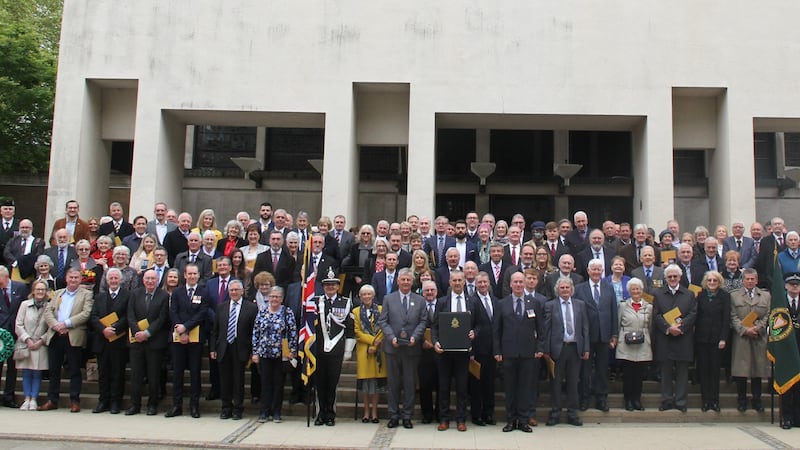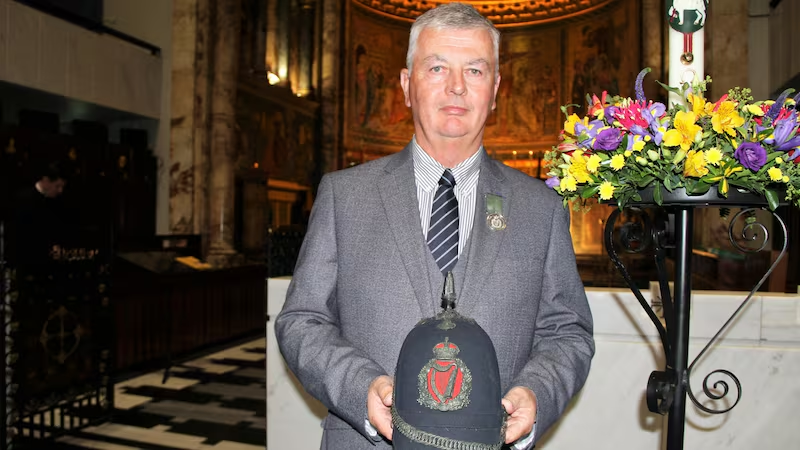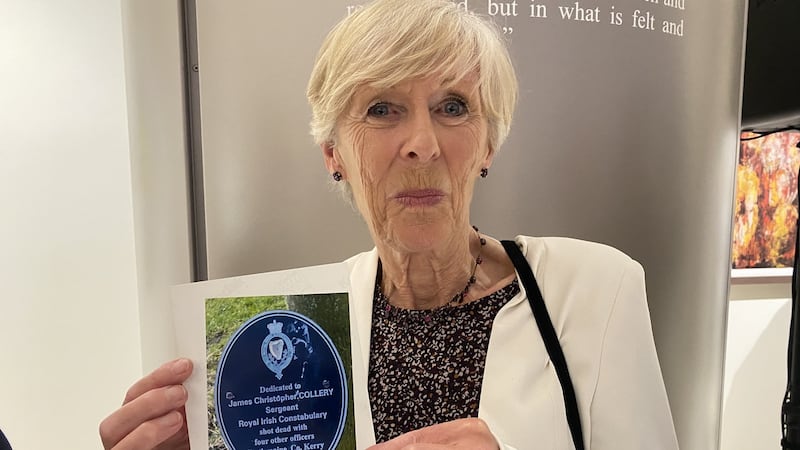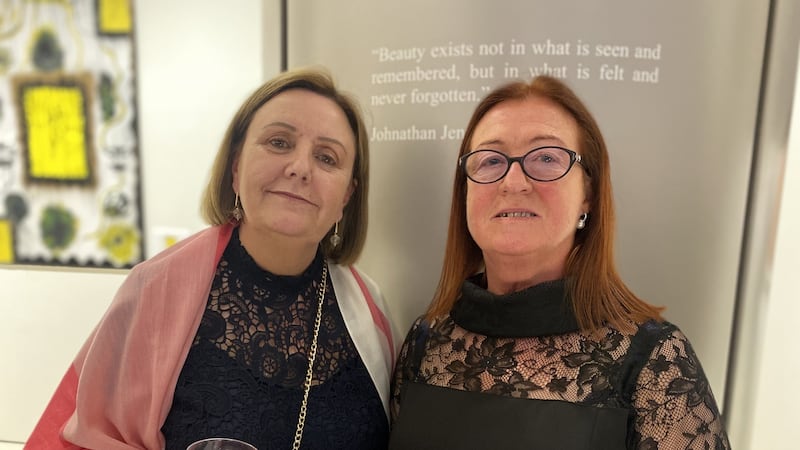The changing of the guard is a ritual largely ignored by Londoners but loved by tourists.
As the tourists craned their necks through the railings to watch the changeover at Wellington Barracks and the band of the Grenadier Guards thumped out its reverie, another changing of the guard was being marked in the chapel next door.

The centenary of the disbandment of the Royal Irish Constabulary (RIC) in April 1922 and its replacement by the Civic Guard and later An Garda Síochána was marked with a service of commemoration in the Guards' Chapel.
The RIC was the main police force for Ireland between 1816 and 1922. A total of 83,743 men served, yet no commemoration will be held in Ireland to mark the constabulary's disbandment, for reasons which became apparent when the then minister for justice, Charlie Flanagan, tried to stage a commemoration event in Dublin Castle in January 2020.
It was considered too much of a security risk and too controversial to reprise such an event, so the Police Roll of Honour Trust in the UK stepped into the breach and offered to stage a commemoration in London.
The trust remembers all policemen who died in the line of duty in the United Kingdom within its current and former territory. There are more than 5,000 names on its roll of honour and, aside from the Metropolitan Police, the RIC has the most recorded deaths on service – 638 in total.
Of those, 549 were killed during the revolutionary period between 1916 and 1922, many of them Black and Tans and auxiliaries drafted into Ireland during the War of Independence. Another 400 were killed serving with the Royal Ulster Constabulary (RUC) during the Troubles.
Police Trust vice-chair John Giblin, whose father comes from Westport, Co Mayo, described himself as a proud "Welsh Irishman". It was not just a voluntary decision to hold a commemoration for the RIC, he explained, it was their duty, he said, as the trust has had a royal charter since 2018 to remember all officers who died in the UK and that included the whole of Ireland before 1922.
Mr Giblin said the majority of the RIC had been “Catholic boys” who joined at a time when there were few opportunities. It was a respected, steady job and they were “caught on the wrong side of history”. It was a common refrain from those in attendance – we should seek to understand, not condemn, the motives of those Irish people who served 100 years ago in the pay of the crown.
There were no Irish or British government representatives at the event. A Department of Foreign Affairs spokesman said the trust had made it aware of the event but no formal invitation had been extended to any Government representative or politician to attend.
That was the way the trust wanted it, Mr Giblin explained: “By inviting politicians you make it political.” The emphasis was on family.
US embassy event
The service at the Guards’ Chapel was preceded by an event on Thursday night at the cavernous US embassy in London to which the relatives of those who had served in the RIC were invited. The trust has had a long relationship with the embassy.
At the embassy event, musician Dave Hardy played Danny Boy in honour of his great-great grandfather, Harry Hardy, the founder of the RIC police band. At the service of remembrance, Mr Hardy and another family member, Maria Byrne, read from Seamus Heaney's The Cure of Troy and its famous lines which begin: "Human beings suffer/They torture one another/They get hurt and get hard."
There were more than 300 people in attendance at the chapel. Mr Giblin said he was “delighted” by the turnout and had received many apologies from those who could not attend.
The chapel was chosen as a secure location, though there was no security at the event. The service began with the carrying in of the union standard and a new one dedicated to the RIC.
Gerry Carter, a retired garda, carried into the chapel an RIC constable hat symbolising his grandfather Tommy Carter's service in the force. He lamented the absence of any official Garda presence at the event.
“I am here to honour all those who served in the RIC and who gave their lives for the people of Ireland,” he said.

“I met several members of the force that I served with here. It was a wonderful service, but I would like to have seen it taking place in Dublin.”
In his address to the congregation Fr Liam Bradley, a Catholic police chaplain in Wales, said many RIC men had died in "political unrest and community division" – the only reference to the War of Independence.
Irrespective of the politics, each death left behind a grieving family and "another branch from the family tree has been removed". He pointed out that the last RIC officer to die, Sgt William Leech, was killed in May 100 years ago.
Maurice O'Reilly, whose great-great grandfather Robert Gardiner served in the RIC, said his presence and that of the other relatives was for family reasons and not political ones.
“We don’t choose our ancestors, but we need to understand them. If we understand them we can understand ourselves. There is a lot of ambiguity in Irish families. Things aren’t straightforward.”
Mary O'Neill brought a photograph of her grandfather Sgt James Collery, a father of nine, who was killed in an IRA ambush on June 1st, 1921, at Ballymacandy, Co Kerry.

Sgt Collery's daughter Katherine, Mary's mother, was just 11 at the time. "She was very bitter about it," said Ms O'Neill. "She saw him being brought back into the church after he was shot. Her family had to leave Limerick and go to Kerry. He was doing his job as a policeman."
Kathi Moore's great-uncle William Johnston was shot dead in 1921 in Kilbritten in Co Cork.
Her grandfather John Edward Johnston and great-grandfather Edward Johnston also served in the force. The family left the South and settled in the North. She was representing her 91-year-old father, who could not attend.
“His father never really spoke about that time. So for him it was quite a journey of finding out more about his father. Two weeks ago, he directed to me to a cupboard in the house where all his father’s items in his service were: manuals, badges, his handcuffs, you name it.”
Bill Brick's namesake and great-uncle Sgt William Brick was killed in an ambush near Timoleague in Co Cork on May 10th, 1920.
“It is very personal for us. We try to leave the politics out of it. I’m looking at it from a family perspective. There were a lot of issues that resonated through the generations later,” he said.
Mr Brick said the original, cancelled RIC commemoration should have been approached from a family and not a political perspective. “The level of cowardice by official Ireland was shocking,” he said.
Helen O’Connor, the sister of broadcaster and Irish Times columnist Seán Moncrieff, said their grandfather Sgt John O’Reilly had served in the force. “We always knew our granddad was in the RIC. The family legend is that he had been shot on duty which isn’t true. I wanted to come because there was so much commotion in Ireland about it. I heard someone say that they wouldn’t be told by the Shinners what to do and I said: ‘Yes, that’s it.’”

Her friend Maeve D’Arcy, whose grandfather Thomas O’Connor served in the RIC, said she too was glad she went. “All those people born in the late 19th and 20th century, most of them went through several wars, they served in different ways, maybe they worked for powers they did agree with, maybe they worked for powers that they didn’t agree with.”
Targeted
Niall Quigley said his family was targeted 100 years ago as a result of his grandfather Thomas Quigley being in the RIC. "They were pelted with stones and not served in local shops. The girls in his family were sent over to an aunt in Hull and never came back."
Mr Quigley said he had not given up hope that a service of commemoration could be staged in Ireland. “They should be commemorating them on their own home soil, not in a foreign country.” Those who objected to such a commemoration were “living in the past and not mature”.
After the service all those who attended gathered on the steps outside the Guards’ Chapel for a group photograph.
Dr Méadhbna Ní Bhaoill (Madge Boyle), who read a beannacht (blessing) in Irish during the service, remembered her great-grand-niece Constable Charles McGee, who was the first RIC officer killed in the Easter Rising. A native speaker from the Donegal Gaeltacht, he was shot dead in Castlebellingham, Co Louth, on Easter Monday 1916.
“If we want peace and unity on the island of Ireland, we have to recognise there are people from different backgrounds who have to work together,” Dr Boyle said.
“I don’t think there is any point in signing the Good Friday Agreement unless people are going to be honest and to accept other people’s points of view.”







